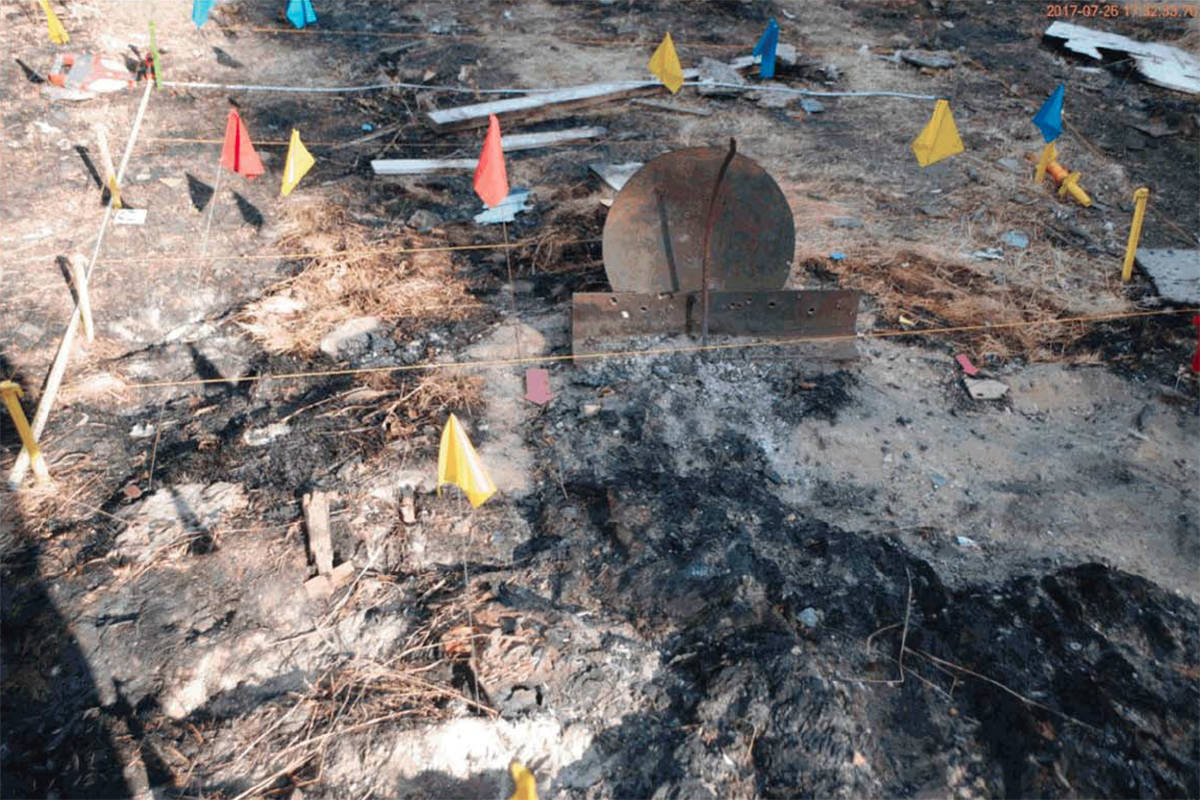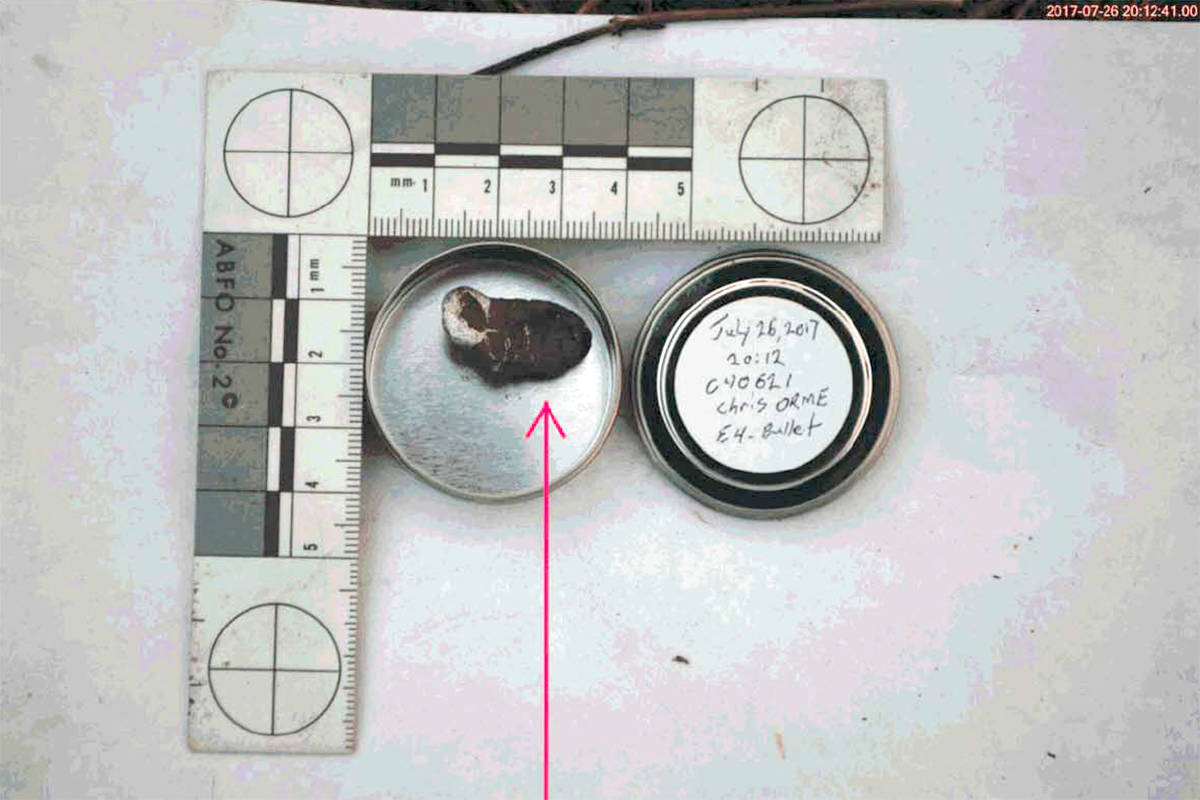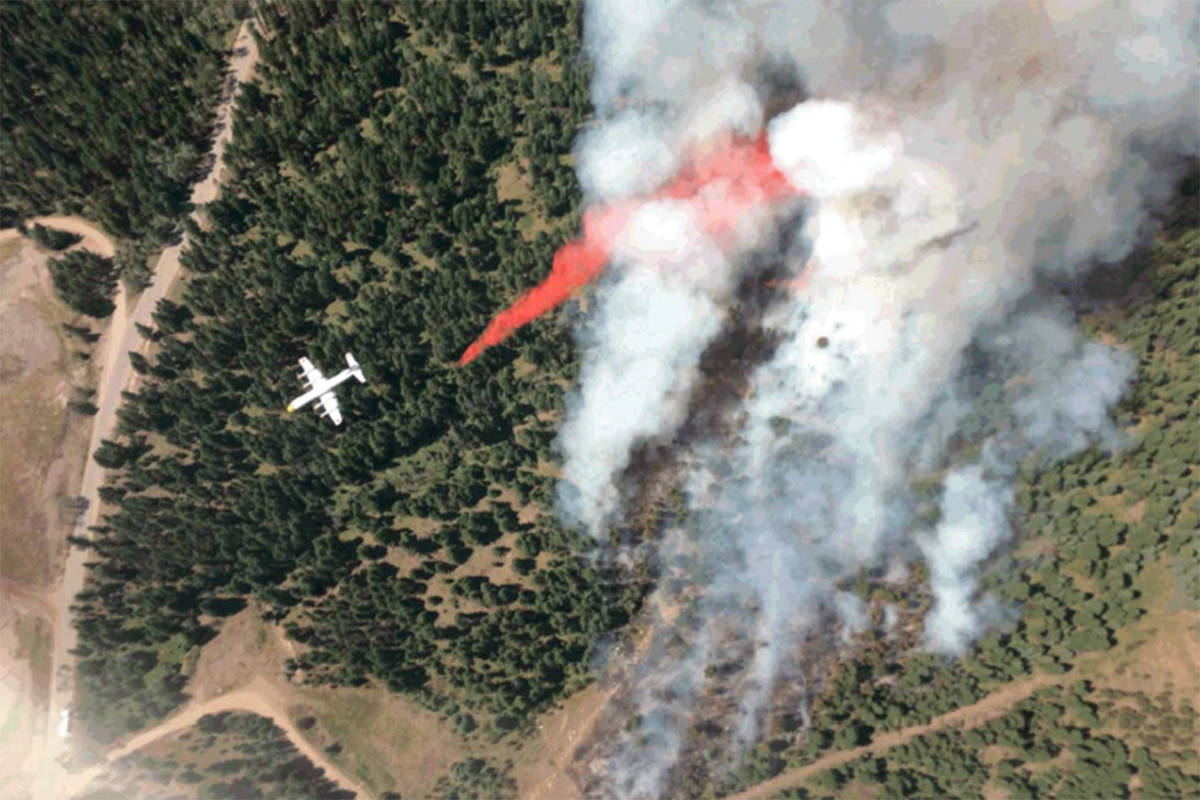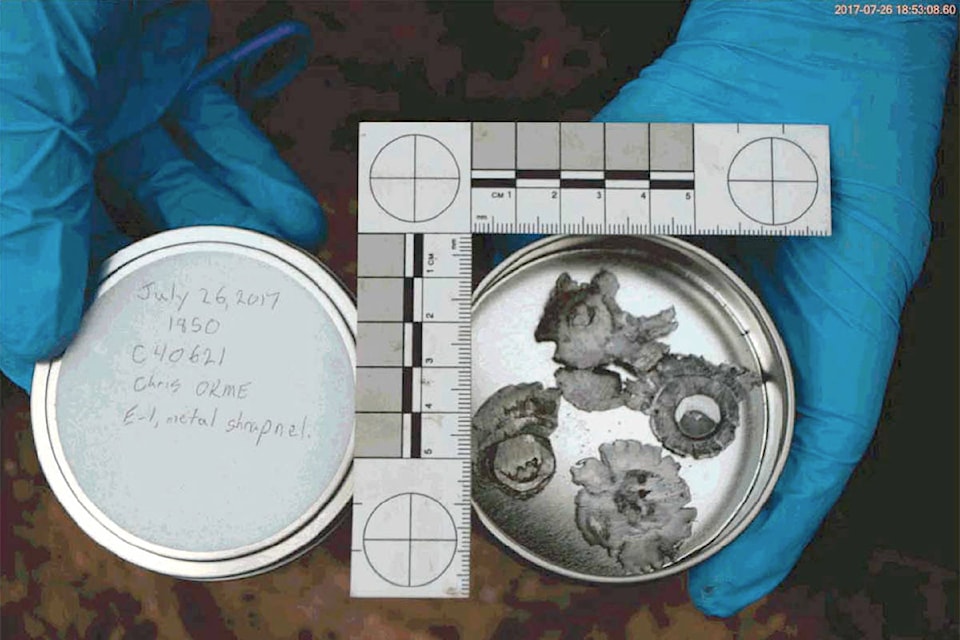Documents obtained by the 100 Mile Free Press through a Freedom of Information request reveal what many residents may have already suspected; the Gustafsen fire (C40621) that occurred in 2017 was caused by firearm use.
“Wildfire C40621 was caused by firearm use. The general site is used as a firearms range. Wildfire origin and cause staff identified the ignition area near a metal target that had numerous markings from bullets impacting against it, as well as bullet holes in the angle iron it rested upon. The metal target was fixed to the ground on a bed of cured matted grass with human refuse - paper, wood et cetera - scattered throughout. Observations made from within a grid search of the ignition area indicated recent firearms activity, such as bullets and fragmented bullet remnants. The conditions present on the day of ignition provided a high degree of probability that a fire would ignite in adjacent fuels as a result of metal fragments from this activity.”
The Gustafsen fire started near 100 Mile House on July 6, 2017, grew to 5,700 hectares and caused the loss of multiple homes.
RELATED: CRD announces 41 homes lost to date in the Cariboo
The documents note that, according to A Study of Wildfire Ignition by Rifle Bullets found “the temperature of bullet fragments could exceed 800C.” The documents further note that “the average ignition temperature of forest fuels is understood to be approximately 260-315 degrees Celcius.”
The frequency of wildfires ignited by firearms is relatively low compared to other causes of ignitions, according to chief fire information officer Kevin Skrepnek.
“The number of fires caused by firearms have increased in recent years, due to a number of reasons, including the use of exploding binary targets, target shooting in certain areas with certain firearms.”
In 2016, there was one firearm use ignition, in 2017 there were six, in 2018 there were six as well and in 2019 there was one, according to Skrepnek.
Restricting firearm usage would be difficult to enforce but they do use signage and educational material on the responsible use of firearms and the potential to start fires, says Skrepnek.
“We urge backcountry users and recreational enthusiasts to use caution during wildfire seasons and hot and dry conditions. Backcountry closures may be implemented during increased fire danger in order to prevent human-caused wildfires.”
The fire was discovered at 11:25 a.m., with around 13 calls coming in by about 11:45. By 12:14 p.m., around the time the first tanker drops were made on the fire, it was estimated at 1.7 hectares, according to the documents.
“There is an ongoing open investigation in to culpability around this wildfire through our Ministry’s Compliance and Enforcement Branch. If anyone has information or tips, they are encouraged to report it to 1-877-855-3222.”
newsroom@100milefreepress.net
Like us on Facebook and follow us on Twitter.



